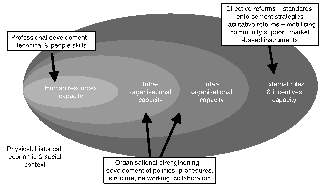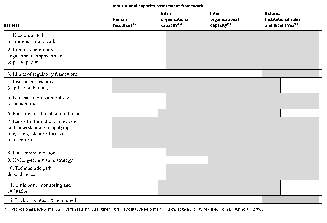Understanding and overcoming socio-institutional impediments to the widespread application of WSUD approaches
Personal Data Online and Data Privacy
August 10, 2021Tuition-free Community College Policies
August 10, 2021Understanding and overcoming socio-institutional impediments to the widespread application of WSUD approaches
Understanding and overcoming socio-institutional impediments to the widespread application of WSUD approaches
DOCUMENT INFO
Literature Review
- EVSC90025 WSUD
- Received: 5 March 2018
- Word count (excluding abstract, references, in-text citations, headings, tables, figures and italicised text): 1096
ABSTRACT
This paper examines existing literature on Water Sensitive Urban Design (WSUD), specifically on the topic of the many interrelated social and institutional barriers which impede the widespread implementation of alternative approaches within the urban water sector. Given the extent of cited impediments, the discussion was synthesised into 4 key themes: embedment of an outdated approach in the urban water sector resulting in institutional and jurisdictional fragmentation, inconsistent regulation and uncoordinated frameworks; lack of political will and capacity including inadequate knowledge, resistance to change, and poor leadership; weak economic incentives for public action due to the underappreciation of the true cost of water and externality benefits provided by WSUD processes and techniques and; inadequate community acceptance due to poor engagement. Addressing these key hurdle areas will involve aligning regulation, frameworks and structures to the alternate paradigm of urban water management; introducing capacity building exercises through accreditation and policy interventions; accounting for externalities in economic appraisals and; implementing engagement activities with the broader community.
Keywords Water Sensitive Urban Design, Socio-institutional Impediments, Regulatory framework, Economic incentive, Community acceptance, Political will
1. Introduction [1]
Despite significant advances in the practice of WSUD as an alternative approach to managing urban water systems, its widespread uptake remains very much in its infancy with many governments, organisations and communities still operating within the traditional paradigm of urban water management (Rebekah Ruth Brown & Clarke, 2007). Over the past decade, various scholars have cited these barriers as broadly social and institutional or “socio-institutional” (Bos, Brown, & Farrelly, 2015; Rebekah R Brown, 2005; Lee & Yigitcanlar, 2010; Maksimovic & Tejada-Guibert, 2001; Marsalek, Rochfort, & Savic, 2001; Sharma, Cook, Tjandraatmadja, & Gregory, 2012).
Meticulous lists of such barriers exist in literature. Indeed, Rebekah R Brown and Farrelly (2009) cited 36 barriers, listing a typology of 12 assessed against a capacity framework (see Table 1 and Figure 1 respectively). This paper will not attempt to review each barrier individually, rather, it consolidates them into four prevalent themes:
- Embedment of an antiquated “conventional” approach in the urban water sector (e.g. uncoordinated frameworks, inconsistent regulation and guidelines, institutional fragmentation, unproductive inter-governmental relations)
- Lack of political will and organisational capacity (e.g. poor political leadership, insufficient knowledge and skills, little or no monitoring and evaluation)
- Weak economic incentives for public action (e.g. limited long-term strategic planning and vision)
- Poor community acceptance and receptivity (e.g. negative perceptions, limited community engagement, empowerment & participation)
The review also provides suggestions to overcome these barriers.

 Table 1 Institutional Barriers Typology –identifying capacity-deficit target areas. Source: (Rebekah R Brown & Farrelly, 2009)
Table 1 Institutional Barriers Typology –identifying capacity-deficit target areas. Source: (Rebekah R Brown & Farrelly, 2009)
Figure 1 Institutional Capacity Assessment Framework. Source:(R Brown, Mouritz, & Taylor, 2006)
2. Socio-Institutional Impediments
2.1 Embedment of an antiquated “conventional” approach in the urban water sector
Despite significant advances in WSUD techniques and processes, the current system of institutions, organisations and supply options align with the conventional model of urban water management (McCallum & Boulot, 2015). WSUD in practice is heavily weighed down by these very arrangements such that their benefits are rarely fully realised (Sharma et al., 2012)

